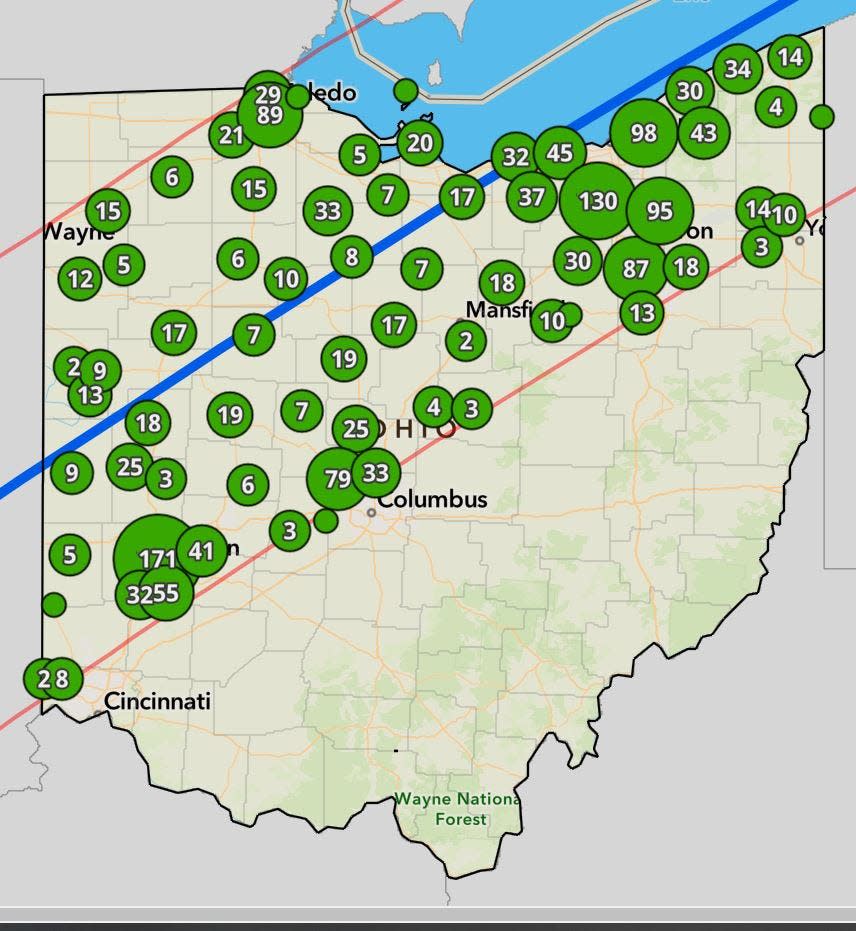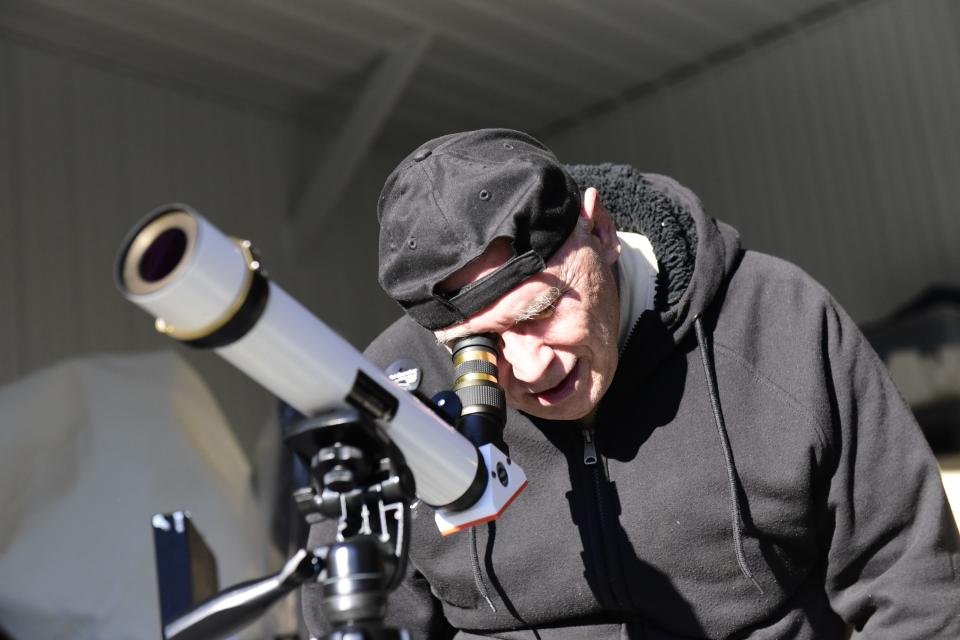Ohioans urged to stock up on supplies, be ready for the April 8, 2024, solar eclipse
Not everyone is aware a total solar eclipse will hit the region on Monday, April 8, 2024.
That was one of the biggest concerns discussed by community leaders Monday during an eclipse awareness meeting held in the emergency operations center of the Richland County Emergency Management Agency.
Local officials have been gathering monthly to plan for the upcoming event, which is expected to bring as many as 400,000 people to Richland County alone.
The next conversation has been scheduled for 9 a.m. Aug. 14 by Rebecca Owens, director of the Richland County EMA.

'There are concerns about fuel'
Communication, travel and access to supplies will all be limited during the cosmic display, which astronomers say will darken the region's skies for nearly four minutes.
Those who plan to stay in the area during the event are urged to plan ahead by gathering stockpiles of all necessary medicine, food, water and other essentials ahead of time — guests visiting the region from other states are expected to buy out most of those items from local stores during their stay.
"One of the big things for locals is that there are concerns about fuel," Owens said.

She recommended everyone fill up their vehicles, generators and gas cans with fuel in the weeks and days ahead of the eclipse, before people from out of town pump the gas stations dry.
It might even be wise for local officials to ask gas stations countywide to have tanker trucks on hand with reserve fuel the weekend of the eclipse, suggested Kathi Cutlip-Mills, coordinator of the county's Community Emergency Response Team.
"If there's a run, they're all going to be empty," Cutlip-Mills said.
She added that the influx of traffic will delay tanker trucks attempting to reach the region with reserve gasoline.
Only NASA-approved glasses should be used
The group watched a video clip of a "Good Morning America" episode that aired shortly after the nation's 2017 solar eclipse.
That program touched on people sitting stuck for more than four hours trying to leave one parking lot and being stranded on freeways with traffic that was stopped bumper-to-bumper for 20 miles. The show also addressed the alarming number — millions — of Americans who searched the internet in the days after the eclipse for questions about symptoms of looking at the sun directly with no protection.

"This is why we're planning ahead now," said Christina Thompson, media relations and communications manager for OhioHealth.
One of the group's goals is to make sure families, schools and libraries are all aware that only NASA-approved glasses should be used to view the eclipse, and that failure to do so could cause permanent eye damage.
Nonemergency appointments are suggested to be canceled
The community leaders Monday discussed reaching out to factories and other places of employment to urge managers to consider adjusting shift times for the day of the eclipse since traffic is expected to be in gridlock for several hours.
Nonemergency appointments are suggested to be canceled the day of the eclipse.
Schools, daycares and churches are asked to consider their hours for the day and have a plan in place to prepare for the influx of visitors from out of the region.
Health systems and other entities that rely on digital switchboards are being told they should expect an overwhelming number of calls and texts that could overload their circuits.
Senior citizens will be invited to a seminar sometime in September that will help them ensure they're prepared for the solar eclipse, according to Susie Danuloff, vice president of governance and marketing for the Area Agency on Aging.
"It's focused on older adults, but I think it will be a good channel for all of us," Danuloff said.
Eclipse's apex will be in North Central Ohio
The centerline of the eclipse — the middle of the shadow's path — will stretch from Texas to Maine.
The eclipse will enter western Ohio about 3:10 p.m. near the city of Greenville in Darke County, according to a NASA map.
The path of the eclipse will travel northeast, reaching Cleveland by 3:15 p.m., then Erie, Pennsylvania, by about 3:18 p.m. Viewers will see the full eclipse for nearly four minutes.
The totality viewing area will be a 124-mile wide strip angling from the southwest to northeast corners of the state.
The apex of the centerline will be in Forest, a village 35 miles west of Bucyrus in Wyandot County.
Ohio's emergency management agency has created a special website, eclipse.ohio.gov, dedicated to the rare celestial event.
"The last total solar eclipse visible in Ohio was in 1806," the website explains. "The next total solar eclipse in Ohio will be in the year 2444."
Since the United States became a country, only 21 total solar eclipses have been visible in the lower 48 states.
ztuggle@gannett.com
419-564-3508
Twitter: @zachtuggle
This article originally appeared on Mansfield News Journal: 2024 solar eclipse: Crowds could impact fuel, traffic, communications

